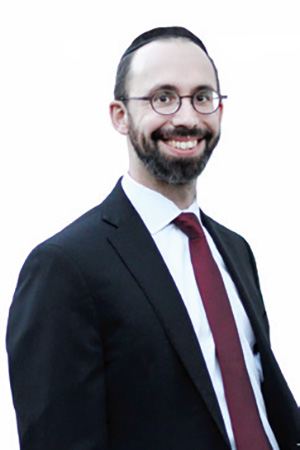
Last week I stood at the chuppah of my older brother, Binyamin, and his kallah, Sorah Miriam. The room was filled to capacity with friends and family who came from far and near to celebrate with them. The joy was palpable. Both had been single and dating for two decades; it was the first marriage for both of them. Finally, on this special night, the years of prayers from family and friends that they find their bashert (soulmate) came to fruition.
We learn from Parshas Toldos just how much an extra amount of prayer can accomplish. Yitzchak and Rivka were married for 20 years with no children. Targum Yonosan ben Uziel tells us that both were biologically unable to have a child. Indeed, Rivka was born without a womb. However, that did not deter them from praying to Hashem for a miracle. The word used to describe their prayer is “vaye’atar.” There are many different terminologies used to describe prayer: vayispallel, va’eschanan, va’yiza’aku; each one is a different mode of prayer. Rashi says that the vaye’atar mode of prayer, a type of beseeching, was answered by Hashem.
What was so special about the “vaye’atar“ form of prayer that persuaded Hashem to grant them their plea? Rashi (25:21) says it entailed “hirbah v’hiftzir”—davening multiple prayers and entreating Hashem multiple times. The root of the word vaye’atar is “ater”—a pitchfork. The Gemara (Sukkah 14) explains that just as a pitchfork is used to pick up, move and turn over hay, so too the prayers of tzadikim have the ability to change a harsh judgment into one of compassion.
Further, Targum Yonosan ben Uziel tells us the place where Yitzchak and Rivka stood when they offered this prayer was Har Hamoriah, the place where Yitzchak underwent the Akeida test and the location of the future Beis Hamikdash. It was at that precise spot that Yitzchak overcame his natural desire to live and willingly had himself bound and presented as a sacrifice. Here, at this special place, they offered their prayer to help overturn the decree that they were not to have children.
The Midrash explains the word vaye’atar as related to the word chater—to dig. This model of prayer was used by Menashe, one of the most wicked Jewish kings, when he prayed to Hashem to save his life as he was placed in a metal box with a fire lit underneath. (Divrei Hayamim II 33:13). As he was roasting inside, he called out to every avodah zarah (idol) in the world with no response. So, he prayed to Hashem and entreated in a vaye’atar fashion. The angels felt it would be disgraceful for Hashem to answer the prayers of the wicked Menashe, so they blocked all the paths in which tefillos travel to reach Hashem. Still, Hashem wanted to answer his prayers, so He figuratively dug a tunnel under His throne to allow the prayer of Menashe to ascend. The Almighty wanted to show us the awesome power of prayer.
We sometimes face situations in our lives where there appears to be no way out—salvation seems impossible. Our lesson here is clear: don’t give up. Daven and daven again; push and pray. Each time we daven with sincerity we are digging a tunnel to Hashem. Hopefully, we will break through and our prayers will be answered.
Hashem wants to show klal Yisrael that our entire existence is miraculous and is substantially affected by prayer. The birth of Yaakov, the father of the 12 shevatim, came about through the concerted prayer of Yitzchak and Rivka…for what was objectively impossible. For the Creator, however, all is possible.
May Hashem answer our prayers and grant us the requests that are for our good.
Rabbi Baruch Bodenheim is the associate rosh yeshiva of Passaic Torah Institute (PTI)/Yeshiva Ner Boruch. PTI has attracted people from all over northern New Jersey, including Teaneck, Paramus, Rockaway and Fair Lawn. He initiated and continues to lead a multi-level Gemara-learning program. Recently he has spread out beyond PTI to begin a weekly beis midrash program with in-depth chavrusa learning in Livingston, Fort Lee and a monthly group in West Caldwell. His email is [email protected].








